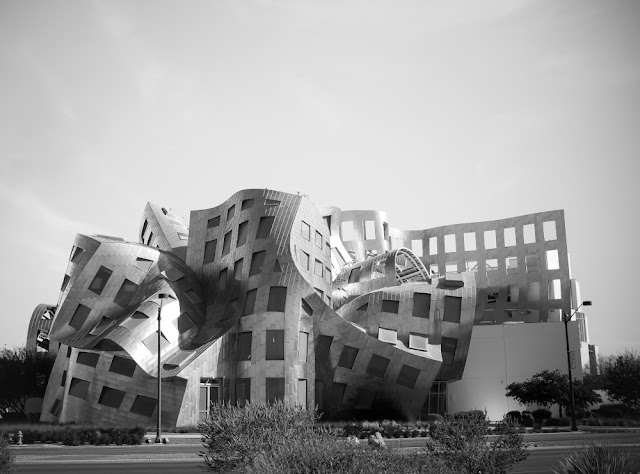Deconstructivism: Breaking the Rules of Traditional Architecture
In a world where architecture once obeyed the strict codes of symmetry, order, and function, a radical movement emerged to turn all expectations upside down. Deconstructivism, a style that defies traditional form and celebrates chaos, fragmentation, and contradiction, revolutionized how we experience buildings—and how we interpret space itself.
What Is Deconstructivism?
Deconstructivism is an architectural movement that began in the late 1980s, characterized by distorted forms, non-linear processes, and an intentional subversion of classical harmony. Rather than seeking balance or coherence, Deconstructivist architecture embraces asymmetry, unpredictability, and apparent disorder.
At its core, Deconstructivism questions the assumption that architecture must follow rules. Walls bend unexpectedly, roofs tilt precariously, and surfaces collide at odd angles—not by accident, but by design.
The result is architecture that feels dynamic, often unsettling, yet intellectually provocative.
Origins and Influences
Deconstructivism has deep roots in both philosophy and art. It draws its name from Deconstruction, a concept developed by French philosopher Jacques Derrida, which argues that meaning is never fixed and that structures (linguistic or otherwise) can be dismantled to reveal internal contradictions.
In architecture, this idea translated into a rejection of structural and aesthetic certainty.
Key early influences include:
-
Russian Constructivism (especially architects like El Lissitzky and Vladimir Tatlin)
-
The Modernist architecture of the Bauhaus and Le Corbusier (which Deconstructivism both reacts to and builds upon)
-
The fragmented, surreal imagery of Cubist art
Notable Architects and Iconic Works
Deconstructivism came into mainstream attention through the 1988 MoMA exhibition, Deconstructivist Architecture, curated by Philip Johnson and Mark Wigley. The exhibition showcased seven architects whose work embodied this disruptive spirit.
1. Frank Gehry
Perhaps the most recognizable figure in the movement, Gehry’s Guggenheim Museum Bilbao (1997) is a sculptural explosion of titanium, glass, and limestone that challenges conventional spatial logic.
2. Zaha Hadid
Known for her futuristic, flowing designs, Hadid's MAXXI Museum in Rome and Heydar Aliyev Center in Baku showcase Deconstructivism’s ability to transform solid materials into seemingly fluid forms.
3. Daniel Libeskind
Libeskind’s Jewish Museum Berlin (1999) uses disjointed lines and voids to evoke memory, loss, and cultural fragmentation—proving how Deconstructivism can carry deep emotional weight.
4. Peter Eisenman
Eisenman’s theoretical approach brought Deconstructivism to academic prominence. His Wexner Center for the Arts and House VI dissect architectural norms at their core.
Key Characteristics of Deconstructivist Architecture
-
Fragmentation: Structures appear disassembled or broken into parts.
-
Non-rectilinear shapes: Angled, skewed, and irregular forms dominate.
-
Dynamic movement: Buildings appear in motion, unstable or unfolding.
-
Surface manipulation: Skins of buildings are folded, warped, or ruptured.
-
Absence of symmetry and uniformity: Visual coherence is deliberately avoided.
-
Conceptual depth: Often tied to philosophical or narrative meaning.
Criticism and Controversy
Deconstructivism is as polarizing as it is revolutionary. Critics argue that many Deconstructivist buildings prioritize form over function, resulting in impractical or uncomfortable spaces. Some see it as elitist or overly cerebral, catering to a small intellectual audience rather than the general public.
Others, however, praise its capacity to challenge the status quo, expand the boundaries of design, and evoke powerful emotional responses.
Legacy and Modern Influence
Though its heyday was in the late 20th century, Deconstructivism continues to influence contemporary architecture, especially in cultural institutions, academic buildings, and avant-garde residential designs.
Its influence can also be seen in:
-
Digital architecture, where complex, non-linear forms are easier to model and construct.
-
Virtual and gaming environments, where physics-defying spaces are common.
-
Graphic design and fashion, where deconstructed visual languages are used for dramatic impact.
Conclusion: A Challenge to Think Differently
Deconstructivism is not about beauty in the traditional sense—it’s about provocation, rethinking space, and exposing the hidden assumptions that shape our built world. It’s a refusal to conform, a celebration of unpredictability, and an invitation to see architecture not as a fixed language, but as an evolving conversation.
In breaking the rules, Deconstructivism didn’t destroy architecture—it redefined it.


No comments:
Post a Comment